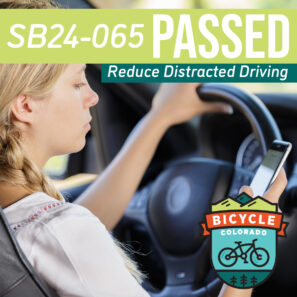Testing for the future

My rowing coach, Jim Joy, used to say, “Every day is a chance to improve,” to tweak, to optimize, to become more efficient, to work better as a part of a system or a team. The same applies to our transportation systems, which are fluid organisms. Just like a rowing stroke or a team of eight oarsmen, there is always room for improvement.
Am I stretching the bounds of analogy here? Probably. But stay with me.
A current example
What’s happening in Boulder right now is a prime example. For those who haven’t heard, as described in this article, Boulder is moving ahead with “right-sizing” pilot projects on Folsom Street, Iris Avenue and 63rd Street as part of its Living Laboratory project.
In each project corridor, the street space will be re-purposed. On Folsom Street, for example, instead of four lanes for motor vehicles, the street will have three (one in each direction and a center turn lane) and there will be bicycle lanes on each side, with a buffer and flexible posts to separate the bike lanes from the car lanes. Are these anti-car projects? Absolutely not. Read on.

So…what’s the connection?
Much like a rowing team, Boulder is trying new ways of doing things, tweaking them and then testing for optimization. They’ll be keeping what works and are open to letting go of what doesn’t. In a nutshell, the city is pushing itself to determine if people can be moved through these corridors more safely and efficiently, regardless of their mode and ability.
Like many communities, Boulder’s population is growing and putting more demand on the transportation system. Increases in transportation funding generally aren’t keeping pace. So the order of the day is, how can we move more people with lower cost refinements to existing infrastructure?
Keeping track
Boulder—and many other Front Range communities for that matter—isn’t resting on its laurels and letting the status quo suffice. They are testing for optimization. A key part of that is measuring, and over the next 12-18 months Boulder city staff will be tracking metrics on these corridors to see how they perform. They will monitor travel times, crash rates and bicycle and automobile user rates. I’m eager to see the results.
Until then, thanks to Coach Joy! Your teaching and urging inspired me to be a better oarsmen and person—and transportation planner, I dare say. To that end, please send along a photo of any corridor in your own community that you think is ripe for a right-sizing project. We’ll start a gallery and hopefully begin some conversations about pilot projects where you live.
Hope you’re having a fantastic summer!]
Leave A COMMENT
Our twitter feed is unavailable right now.
The Latest News
view all- Jun 13, 2024
- by Bicycle Colorado
Discover Denver With Denver Century Ride
- Bicycling in Colorado,
- Denver,
- Event Member Spotlight,
- Events
- No Comments








